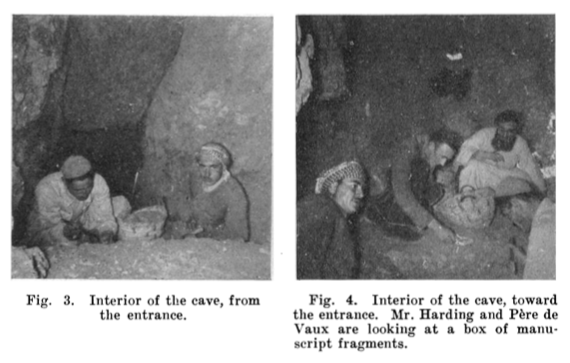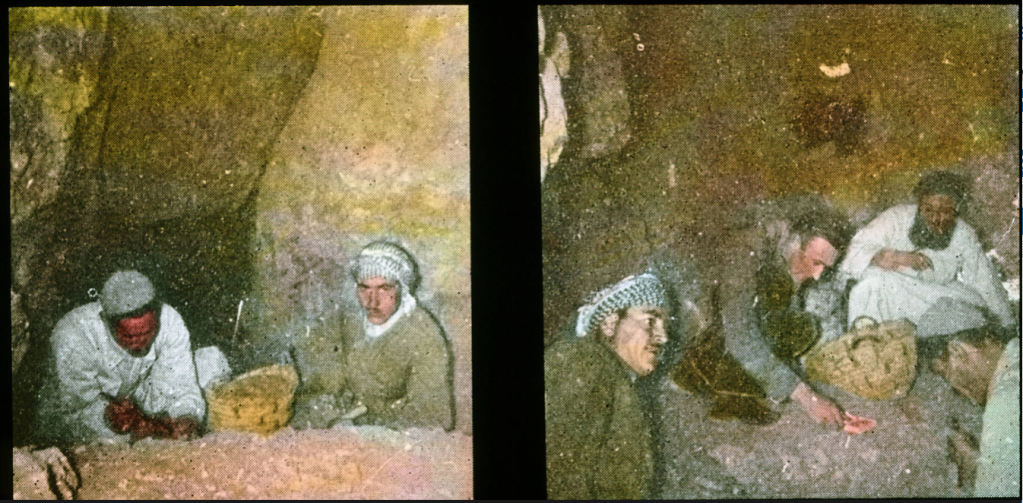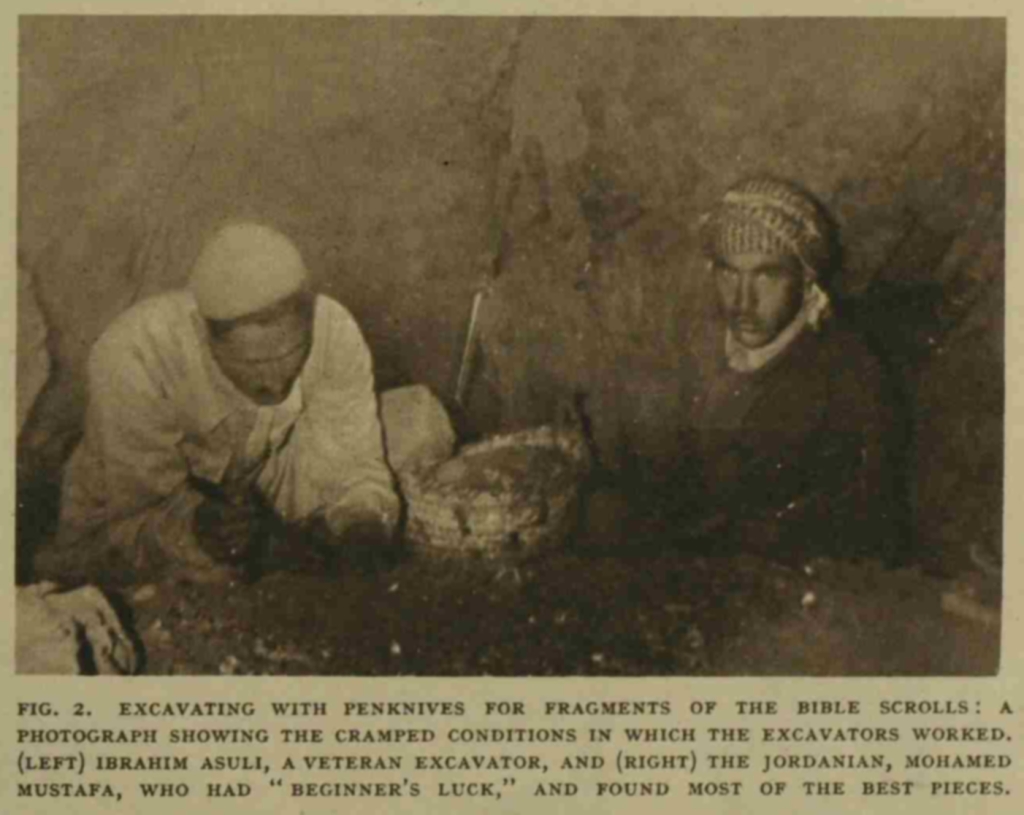In spare moments, I continue to work on the manuscripts generally associated with Cave 1 at Qumran. I’ve become very interested in the photographs of the excavations of Cave 1. Both Gerald Lankester Harding and Ovid R. Sellers took pictures during the excavations at the site in 1949. I’ve seen a scattering of these published in different places, but I stumbled across a very interesting one recently. I had seen a couple versions of this image before. The first one appeared in an article by Sellers in BASOR in 1949:

Another “colorized” version appeared in a detailed article on Cave 1 that was published a few years ago:
Joan E. Taylor, Dennis Mizzi, and Marcello Fidanzio, “Revisiting Qumran Cave 1Q and its Archaeological Assemblage,” Palestine Exploration Quarterly 149 (2017), 295-325.
The authors of the article had identified a collection of tinted slides at Oberlin College that included photos taken by Sellers.

The label on the slide reads as follows: “Ain Feshka cave, BASOR 114; (1) interior of cave from the entrance (2) interior of cave from the entrance. Harding & de Vaux looking at box MSS fragment[s].” It is of course interesting to see de Vaux and Harding at work, but who are the others carrying out the excavation in these images? I came across yet another version of the photo on the left recently that answers this question. It has a caption naming the two excavators in the photo: Ibrahim Asuli and Mohamed Mustafa. It’s included in an article by Harding in the Illustrated London News:

Harding elaborated a bit on the information in the caption:
“In addition to Père de Vaux and myself, the actual work of excavation was carried out by Ibrahim Asuli, a veteran excavator of twenty-three years’ experience, Azmi Khalil, both of the Palestine Archaeological Museum, and Mohamed Mustafa, a Jordanian, and a newcomer to the profession. He had the usual beginner’s luck and found most of the best pieces.”
Both Ibrahim Asuli (sometimes spelled Assuli) and Azmi Khalil also worked on de Vaux’s 1952 expedition that explored the region and inventoried the other caves in the area. They are mentioned as part of the team in an article by William L. Reed, “The Qumrân Caves Expedition of March, 1952,” BASOR 135 (1954). During that project, they oversaw (together with Hasan Awad Qutshan of Amman) a crew of 24 Bedouin searching the cliffs looking for artifacts.
Presumably, it is these two who were still working with de Vaux in 1956 on Cave 11. In one of his notebooks from that year, de Vaux mentions “Ibrahim and Azmi” as team members (see Humbert and Fidanzio, Khirbet Qumrân and Aïn Feshkha IVA, Vandenhoeck & Ruprecht, 2019, p. 12, note 5). These men were clearly important participants in the excavation of the Qumran caves. It is good to be able now to put faces with the names.


Pingback: Biblical Studies Carnival 175 for September 2020 | Brent Niedergall
Pingback: New Article on the Dead Sea Scrolls said to come from Cave 1Q | Variant Readings